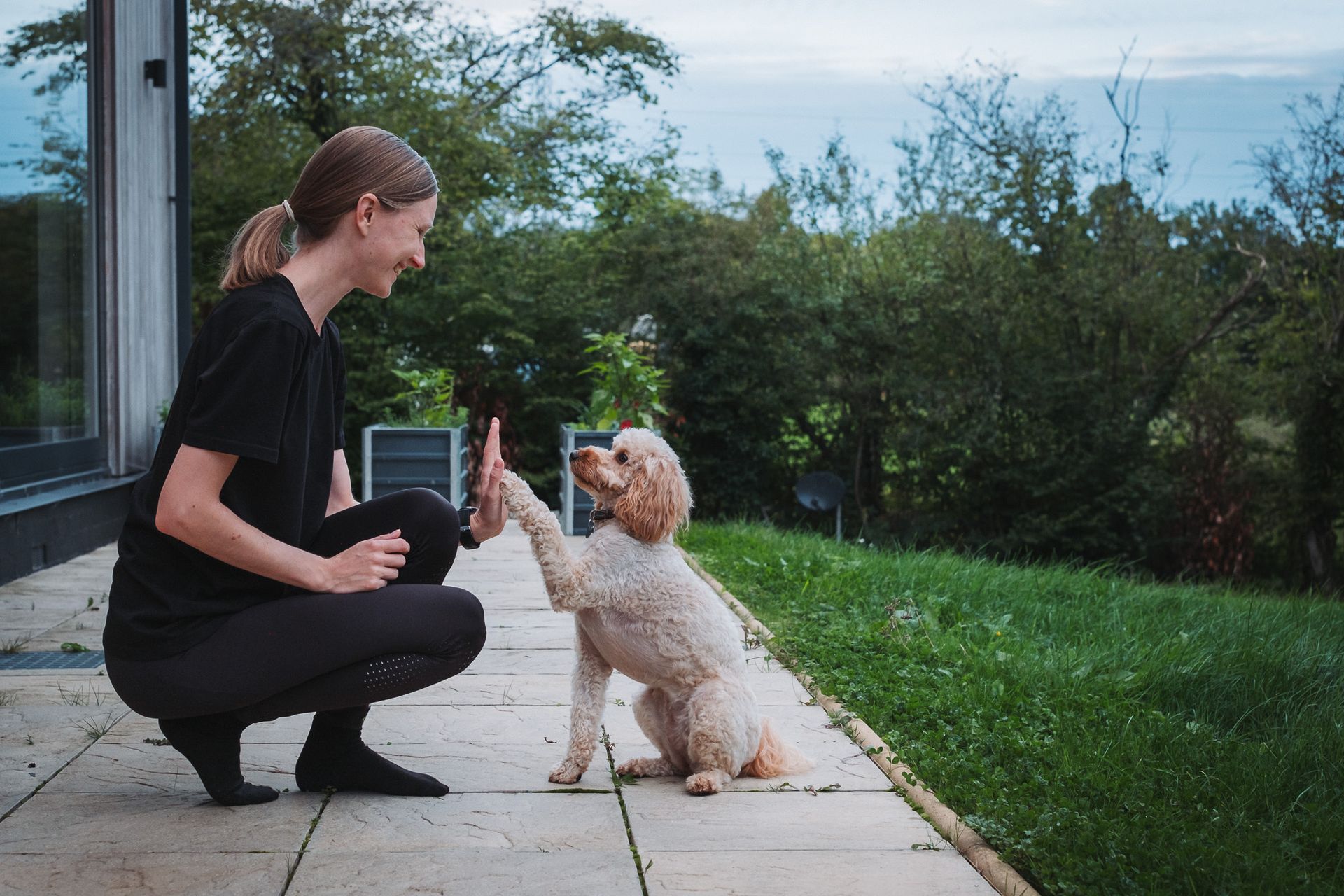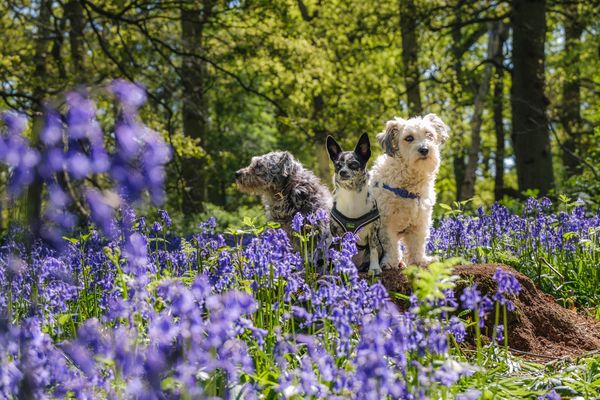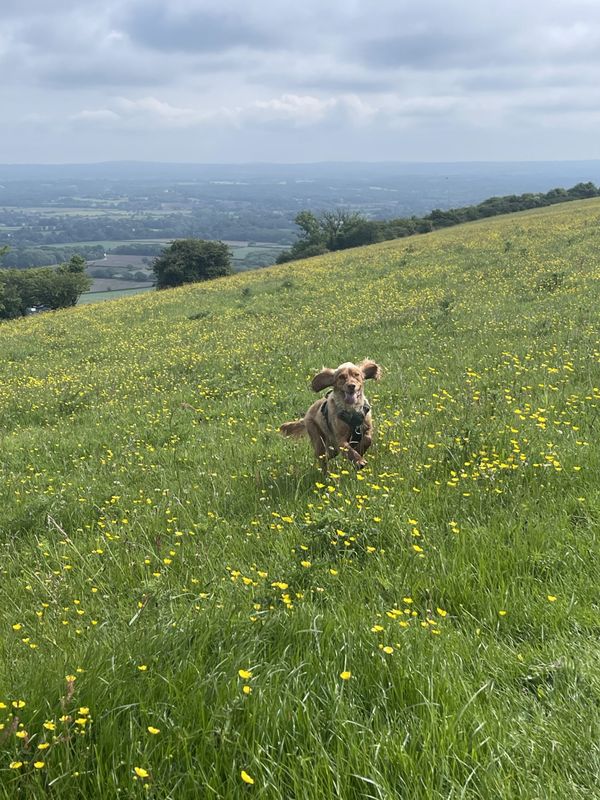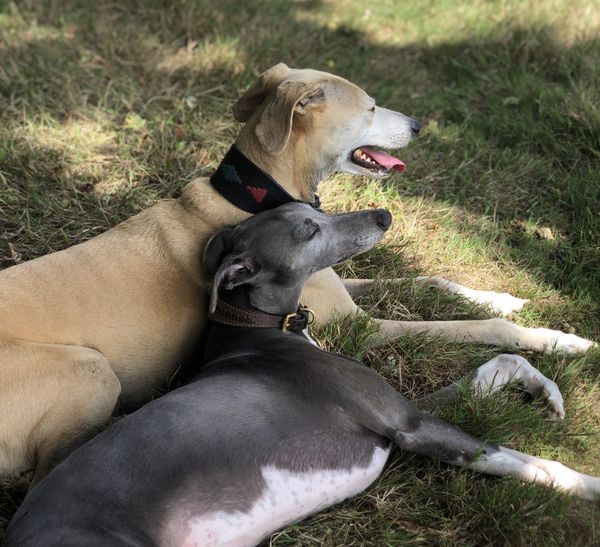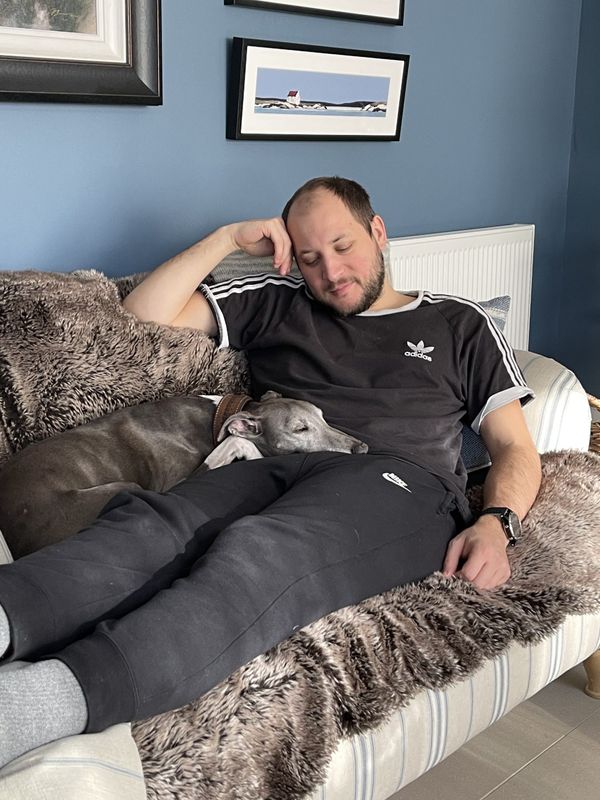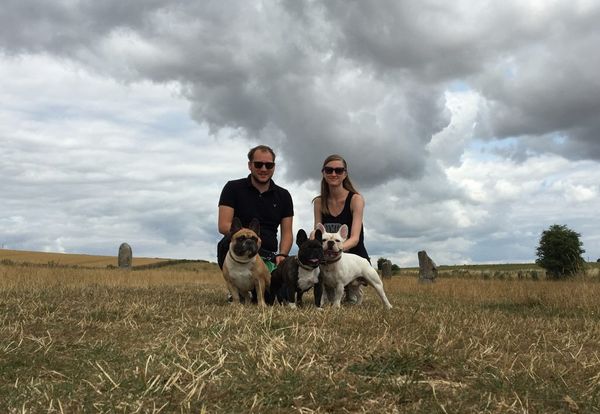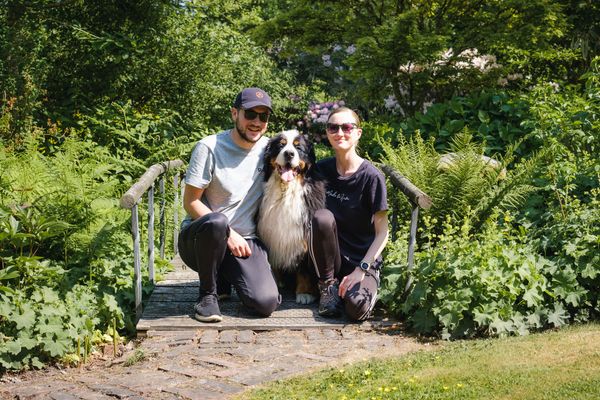With over 100 house sits under our belts, it’s safe to say we’re very used to settling into life with all kinds of different pets! We pride ourselves on being able to adapt to vastly different living situations, from city flats with laid-back cats to smallholdings sprawling across acres of countryside, where the routine with various livestock runs like a well-oiled machine. It’s really important for us to form strong bonds with the pets we care for, no matter the length of the house sit. After five full years of house sitting, getting to know pets is still just as special to us as it was on our first pet sit! We started house sitting full time back in 2018 because we both have a genuine love for spending time with animals, and over the years we’ve learnt so much about the best way to form bonds with them. Here are our top tips for forming a bond with pets that aren’t your own:
Gentle body language
This is our first tip as we quite often arrive at a house on the first day having never met the pets beforehand. Our nomadic lifestyle means we are rarely available for an in-person meet and greet – we opt instead for a video call with every homeowner before we commit to house sit. (Check out our list of questions to ask a homeowner) When arriving at a house for the first time, we’ve been experienced widely contrasting welcomes from pets. Sometimes excitable dogs will run to us and give us kisses straightaway, keen to make new friends! Other times, especially with dogs, the pets are more wary and nervous and it’s vital to tread carefully as you enter their space. Some pets just need a little more time to get used to a new person, so adjusting your body language to move slower, making no sudden movements, using a soft tone of voice, will all help the pets to feel relaxed around you which is a great foundation for forming a bond. When the home owners have left for their trip, we recommend sitting in a room that the pets can easily leave if they want to so they can decide whether to come to us or not. Sometimes a dog or cat will take themselves off to their bed (or their owners’ bed!) So we go to check on them and give them a gentle stroke if they’ll let us, before leaving them to be alone. Which brings us to…
Let them come to you
Don’t try and force a pet to spend time with you! This can be especially important on smallholding sits, where you may be caring for larger animals such as cows, horses or alpacas. If a cat or dog gets spooked, the worst thing that may happen is a scratched sofa or a little accident in the home. If a flock of sheep get spooked, they could serious harm you or themselves! We find that usually, once we’ve established ourselves as the food preparers / ball throwers / givers of pats or scratches behind the ear, pets figure out that we’re only there to take care of them while their owners are away! You may have to adapt your approach depending on the kind of animals you’re caring for – crouching down to a dog’s level to tickle their chin will show that you’re not a threat, whereas it’s safer to stand tall and be assertive with a herd of cows. Always take the owners’ advice for how to approach their pets, and give animals the space to suss you out so they can decide on their own terms when they’d like attention from you.
Follow their routine (if they have one)
One of the many reasons we will ALWAYS recommend having a house sitter instead of putting animals in temporary accommodation is because it’s been proven that animals settle quicker with new people than new places. Being at home, even with their owners away, pets are surrounded by their familiar smells, toys and most importantly, their routine. It’s vital to follow a pet’s routine as laid out by the owner at any time, but doing so straight from the outset can make the transition from the owners in the house to pet sitters in the house as seamless as possible. This means we walk dogs at a time recommended by the homeowner and for a length of time they’re used to, we keep house pets to the rooms they’re allowed in, and feed all animals on the dot of their feeding times – sometimes with smallholding sits this means preparing in advance during the day. Our main aim as live-in pet sitters is almost to be invisible, making sure pets are so comfortable and happy that they don’t notice their owners aren’t there, and when owners return it’s as if they haven’t been away! Following pets’ routines lets them know that everything is ok, and they will trust you sooner. We often find even the most wary of dogs becomes our best friend after our first walk together! Establishing yourself as a caregiver slotting into their day, not somebody who will disrupt their routine, will help you form a bond with them much more easily.
Enjoying this post? Help support our blog by leaving a tip from as little as £1!
Treats!
If a home owner allows, food treats are a good way of showing animals that you’re friendly and can be trusted! Whether it’s a few Dreamies for cats, a Bonio for a dog or, as we experienced at one house sit, feeding alpacas apple slices and carrots from the palms of our hands (they were very pleased to see us every day after that!) We always carry our treat pouch from Dicky Bag with us on walkies with dogs for this reason. An owner leaving can be a little confusing for pets, so giving them something special can ease this stress. And treats doesn’t just mean food – we’ve found spending dedicated time grooming animals when needed, playing with their toys, and praising them when they respond to us all help animals bond with us!
Lots of cuddles and affection
This one’s our favourite! At every house sit we treat pets as if they are our own, giving them our full attention and tending to their needs throughout each day. Over our pet sitting journey, we’ve taken goats on their favourite walk, filled up paddling pools for happy ducks, given hamsters and guinea pigs a good brush, and spent countless hours playing fetch with dogs! There’s nothing more heartwarming on a pet sit than a pet really starting to show you that they enjoy spending time with you. We’ve surprised owners in the past when we’ve told them that their usually distrustful cat has snuggled up under the covers with us at bed time, and we love when a dog jumps up on our laps for a cosy evening cuddle. Taking the time to listen to a pet’s needs, showing them they can trust you and rewarding them for doing so will ensure you form a bond that will outlast the length of the house sit – and hopefully, as we’ve experienced many times, pets will remember you and greet you happily when you arrive for your next stay!
If you found this post helpful, please support our blog by donating as little as £1 to our running costs! Thank-you!
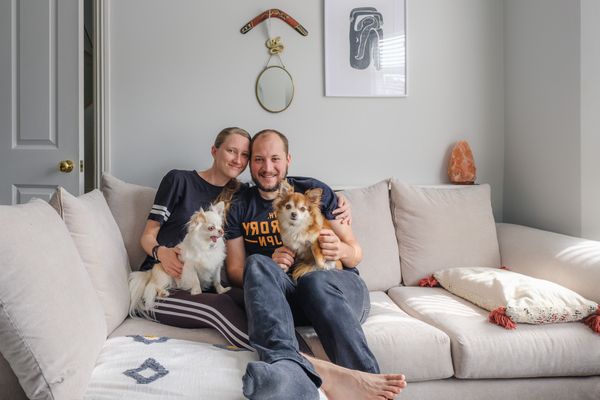
We are Chris+Suze
